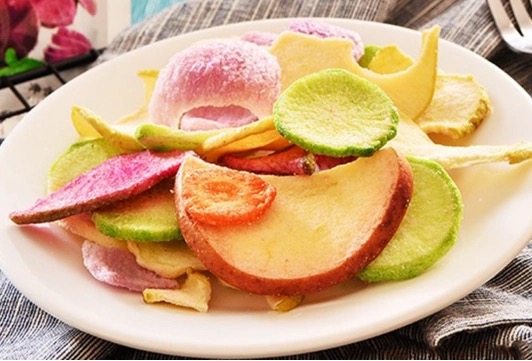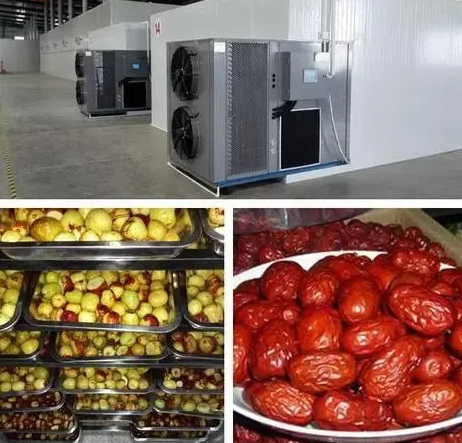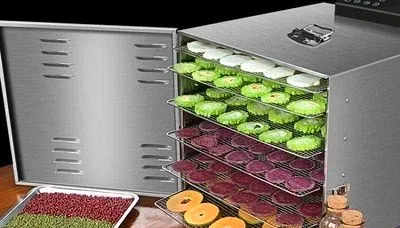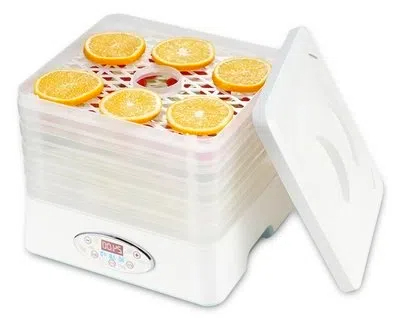
Content Menu
● Introduction
● Understanding Heat Pump Dryers
● Comparison with Traditional Dryers
● Benefits of Using Heat Pump Dryers for Food
>> Energy Efficiency and Cost Savings
>> Preservation of Food Quality and Nutrients
>> Environmental Impact
● Applications of Heat Pump Dryers in Food Industry
>> Types of Food Suitable for Drying
>> Case Studies of Successful Implementations
● Choosing the Right Heat Pump Dryer
>> Factors to Consider
>> Recommendations for Different Scales of Operation
● Conclusion
● Frequently Asked Questions
>> 1. What is the difference between heat pump dryers and conventional dryers?
>> 2. How do heat pump dryers preserve food quality?
>> 3. What types of food can be dried using heat pump technology?
>> 4. Are heat pump dryers suitable for home use?
>> 5. What are the maintenance requirements for heat pump dryers?
Introduction
In the realm of food processing, the method of drying is crucial for preserving the quality, flavor, and nutritional value of food products. Among the various drying technologies available, heat pump dryers have emerged as a revolutionary solution. These dryers not only enhance energy efficiency but also ensure that food retains its essential nutrients during the drying process. This article delves into the workings of heat pump dryers, their benefits, applications in the food industry, and guidance on selecting the right equipment.

Understanding Heat Pump Dryers
Heat pump dryers operate on a unique principle that sets them apart from traditional drying methods. Unlike conventional dryers that expel hot air and moisture, heat pump dryers recycle air within a closed system. This process involves extracting moisture from the food while simultaneously heating the air, which is then circulated back into the drying chamber. This method significantly reduces energy consumption, making heat pump dryers an eco-friendly choice for food processing.
Comparison with Traditional Dryers
Traditional dryers often rely on high temperatures to evaporate moisture, which can lead to the loss of flavor and nutrients. In contrast, heat pump dryers operate at lower temperatures, allowing for a gentler drying process. This not only preserves the integrity of the food but also minimizes energy usage, making heat pump dryers a more sustainable option.
Benefits of Using Heat Pump Dryers for Food
Energy Efficiency and Cost Savings
One of the most significant advantages of heat pump dryers is their energy efficiency. They consume considerably less energy compared to traditional dryers, leading to substantial cost savings over time. This efficiency is particularly beneficial for large-scale food processing operations where energy costs can be a significant portion of the overall expenses.
Preservation of Food Quality and Nutrients
Heat pump dryers excel in preserving the quality of food. The lower drying temperatures help maintain the color, flavor, and nutritional content of the food, making it more appealing to consumers. This is especially important in the health-conscious market where consumers are increasingly looking for products that retain their natural goodness.
Environmental Impact
By utilizing less energy and reducing waste, heat pump dryers contribute to a lower carbon footprint. This aligns with the growing trend towards sustainability in food production, where companies are seeking ways to minimize their environmental impact.
Applications of Heat Pump Dryers in Food Industry
Heat pump dryers are versatile and can be used for a wide range of food products. From fruits and vegetables to meats and herbs, these dryers can effectively remove moisture while preserving the food's quality.
Types of Food Suitable for Drying
1. Fruits: Apples, bananas, and berries can be dried to create healthy snacks.
2. Vegetables: Carrots, peppers, and mushrooms retain their flavor and nutrients when dried.
3. Meats: Jerky production benefits from the controlled drying environment of heat pump dryers.
4. Herbs: Delicate herbs can be dried without losing their essential oils and flavors.
Case Studies of Successful Implementations
Several food processing companies have successfully integrated heat pump dryers into their operations. For instance, a fruit processing plant reported a 30% reduction in energy costs after switching to heat pump technology, while also improving the quality of their dried fruit products.

Choosing the Right Heat Pump Dryer
When selecting a heat pump dryer, several factors should be considered to ensure it meets the specific needs of your operation.
Factors to Consider
1. Capacity: Determine the volume of food you plan to dry to select an appropriately sized dryer.
2. Features: Look for models with adjustable temperature settings, timers, and easy-to-clean designs.
3. Brand Reputation: Choose reputable brands known for their reliability and customer support.
Recommendations for Different Scales of Operation
For small-scale operations, compact models with lower capacities may suffice, while larger food manufacturers might require industrial-grade dryers capable of handling high volumes.
Conclusion
Heat pump dryers represent a significant advancement in food drying technology, offering numerous benefits including energy efficiency, preservation of food quality, and reduced environmental impact. As the food industry continues to evolve, the adoption of heat pump technology is likely to increase, paving the way for more sustainable and efficient food processing practices.

Frequently Asked Questions
1. What is the difference between heat pump dryers and conventional dryers?
Heat pump dryers recycle air within a closed system, using lower temperatures to dry food, while conventional dryers expel hot air and moisture, often leading to nutrient loss.
2. How do heat pump dryers preserve food quality?
By operating at lower temperatures, heat pump dryers maintain the food's color, flavor, and nutritional content, making them ideal for health-conscious consumers.
3. What types of food can be dried using heat pump technology?
Heat pump dryers can effectively dry a variety of foods, including fruits, vegetables, meats, and herbs.
4. Are heat pump dryers suitable for home use?
Yes, there are compact heat pump dryers designed for home use, making them accessible for individuals interested in food preservation.
5. What are the maintenance requirements for heat pump dryers?
Regular cleaning of filters and ensuring proper airflow are essential for maintaining the efficiency and longevity of heat pump dryers.












